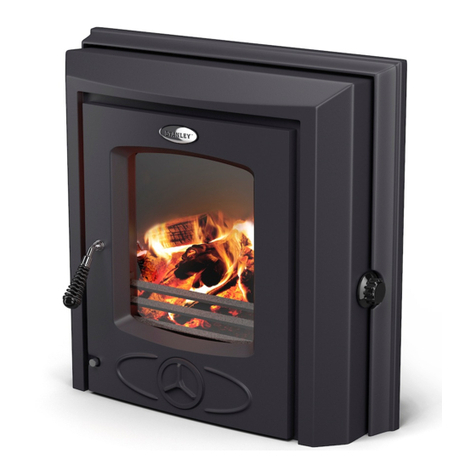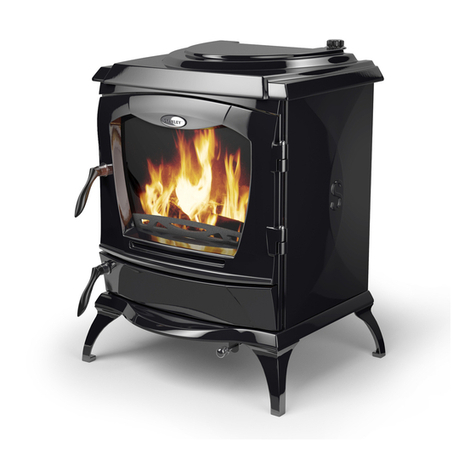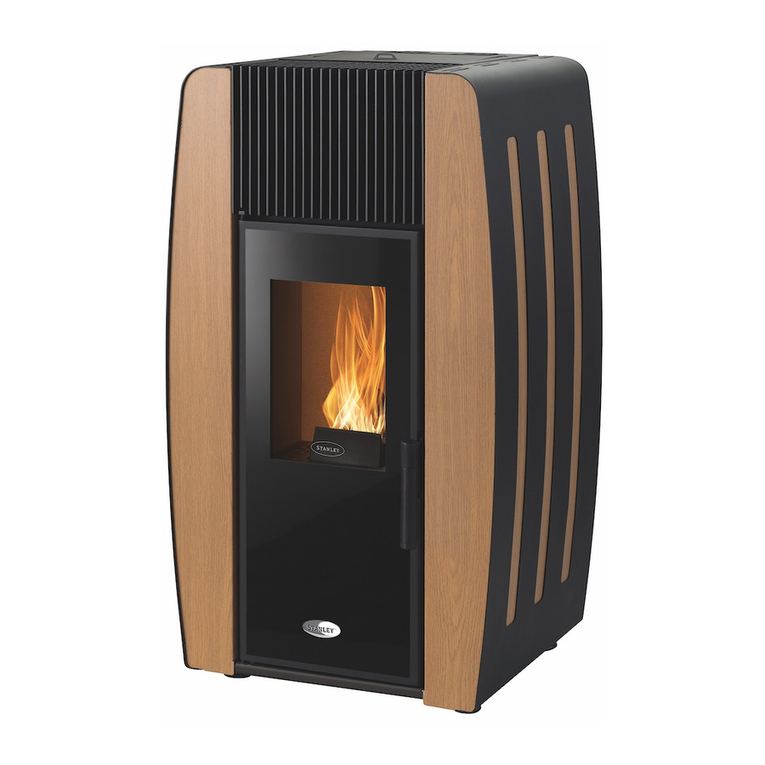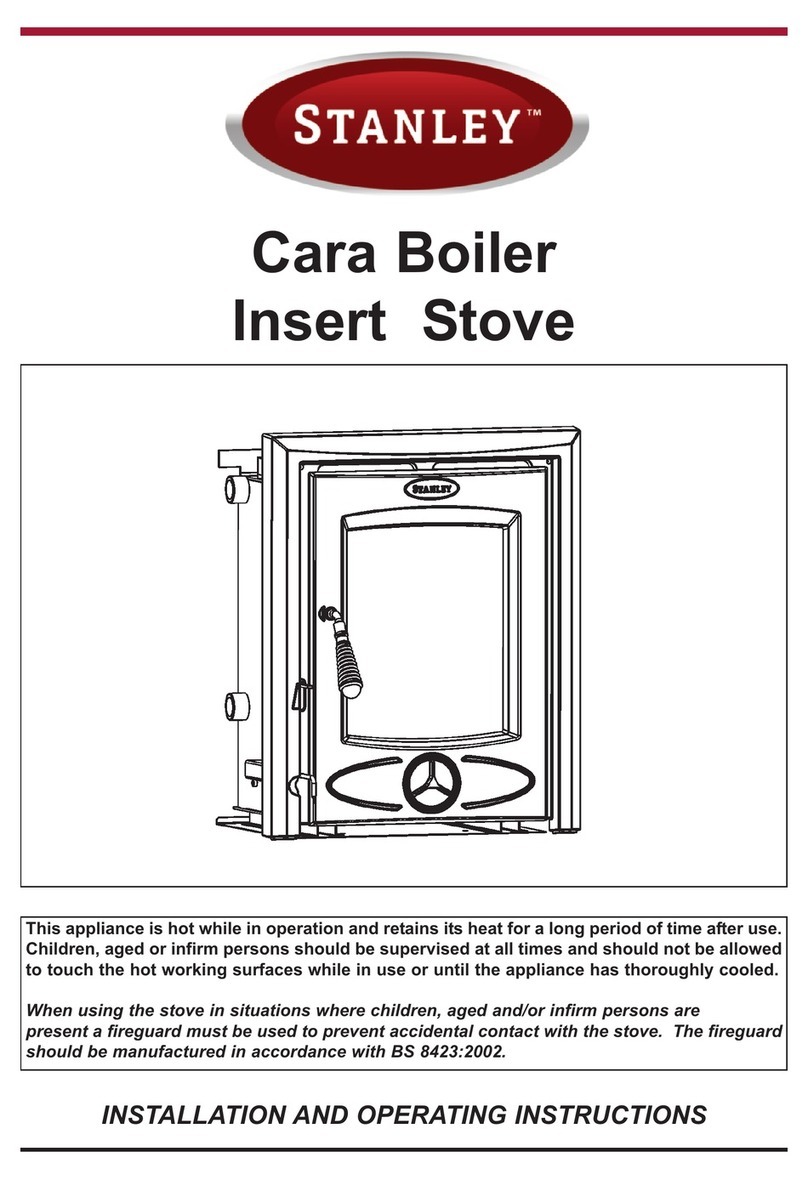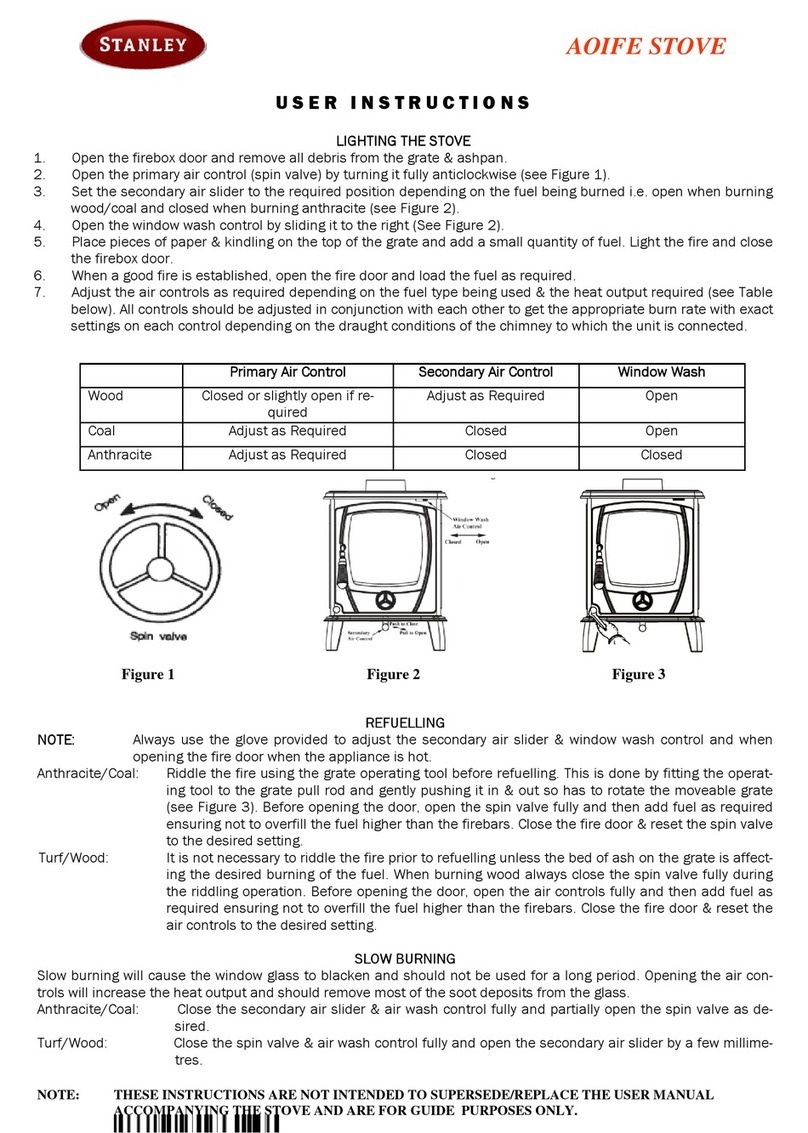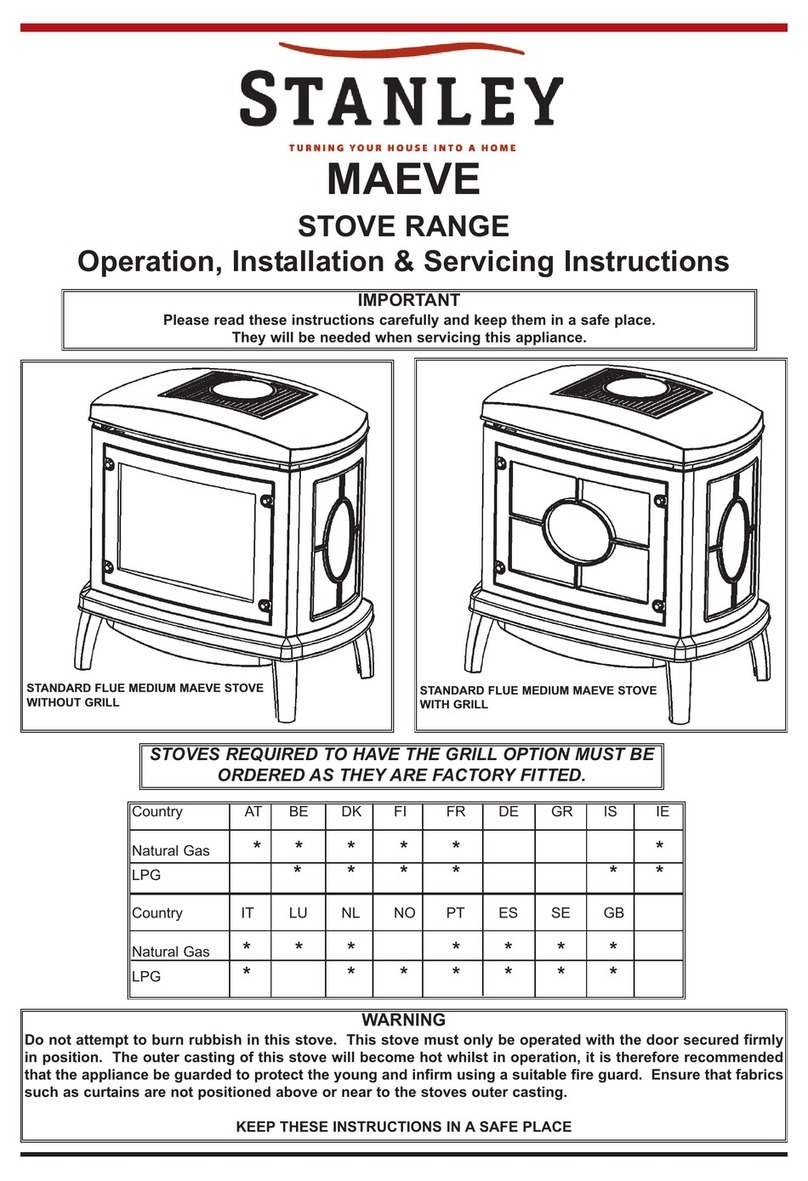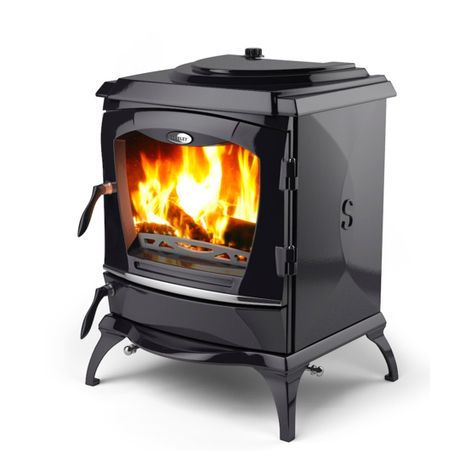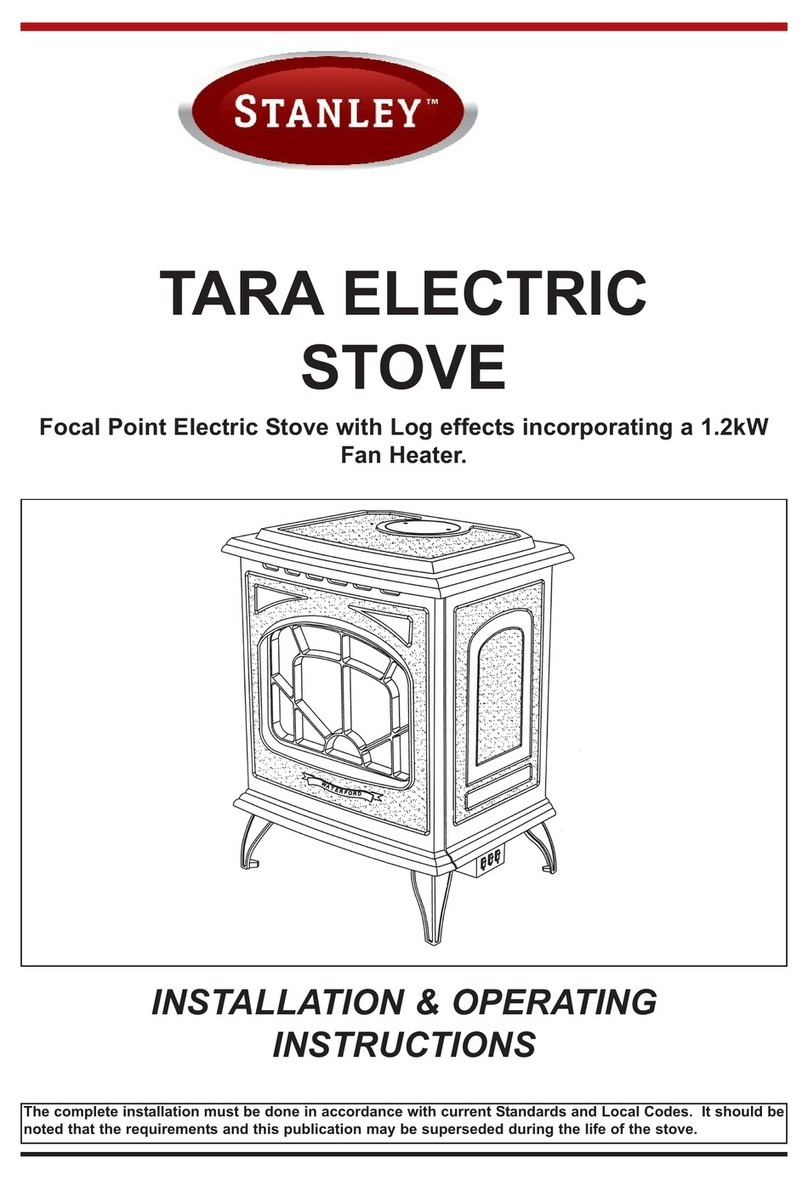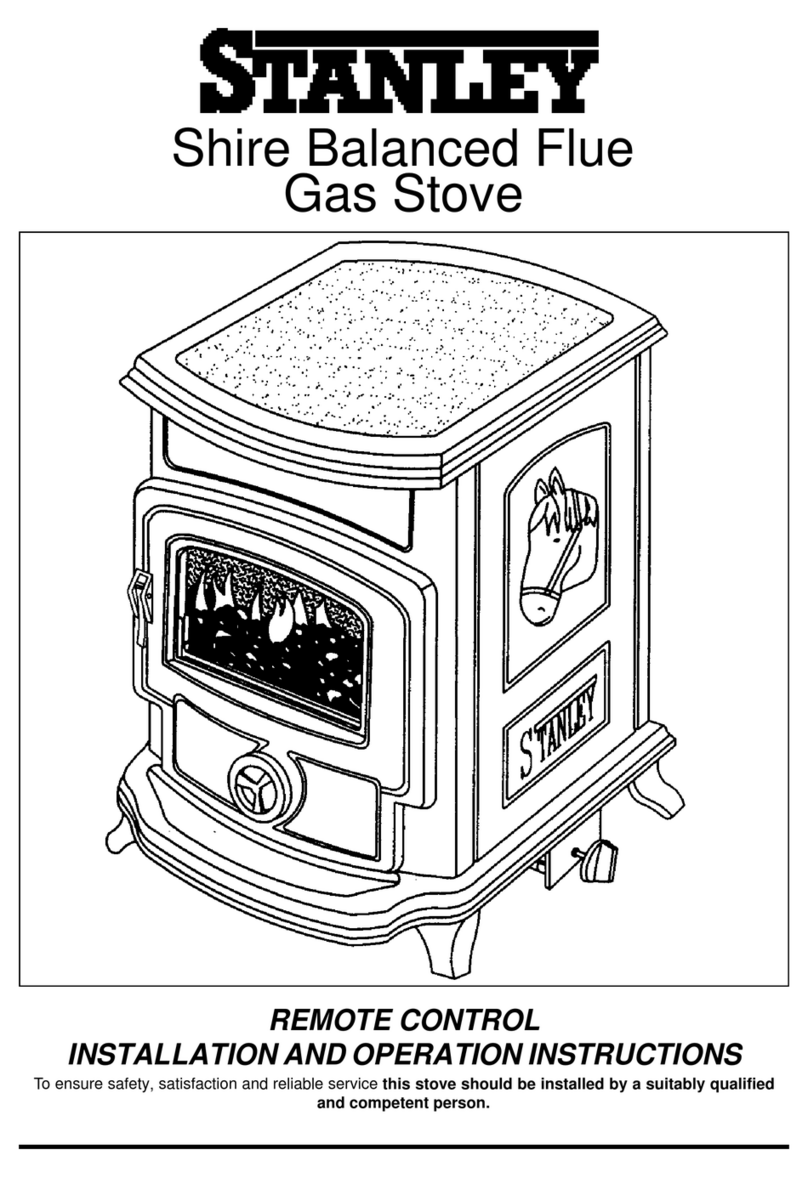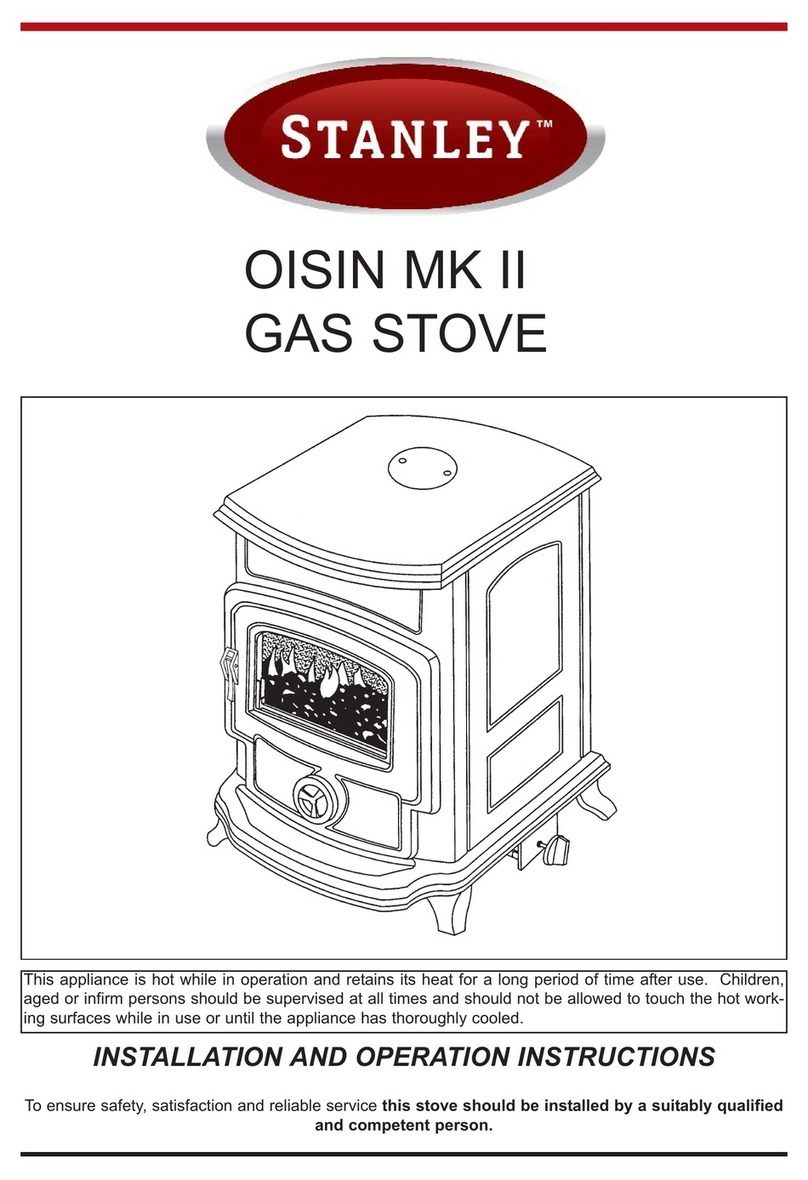15.10 The appliance is factory set for rear exit
therefore for top exit the spigots and blank-
ing plates must be reversed, see Fig 14.
Take care not to drop or damage the gas-
kets. If a restrictor is required fit this
between the small outlet spigot and the
airduct, see Fig14. The large outer spig-
ot must be fitted with the flue fixing hole
facing forward.
15.11 If the horizontal terminal is used assemble
the required amount of vertical flue includ-
ing the 90oelbow onto the stove. Drill
through the fixing hole in the spigot using a
3.5mm drill and secure with the screw pro-
vided. Do not forget the optional decora-
tive collar if you have purchased one. A
wall plate is supplied to secure the flue to
the inside wall. Bend the tab to 90oand
loosely place on the elbow.
15.12 To determine the height of the hole for the
horizontal flue, measure from the hearth to
the centre of the elbow, see Fig.10.
Refer to 15.4 for methods of cutting the
hole.
15.13 The final length of horizontal flue pipe
incorporates the terminal. This is the only
section that can be shortened.
DO NOT ATTEMPT TO SHORTEN ANY
OTHER SECTION OF FLUE PIPE.
Refer to sections 15.7 to position the stove.
The fixing holes for the wall plate can be
marked on the wall. Use the wall plate as
a template. The securing tab can be either
on top or underneath the flue. See Fig. 16.
15.14. To determine the length of the terminal flue
section measure from the outside of the
wall to the stop on the 90oelbow.
Horizontal flue sections may be fitted
between the elbow and the terminal sec-
tion. see Fig. 16.
15.15 Once the length of the terminal has been
obtained, mark the flue all the way round,
insert the cardboard fitment as shown in
Fig. 17. This will support the inner flue.
When cutting, take care not to damage the
edges of the flue. File any sharp edges
from the cut end of the flue, and remove
any of the cardboard fitment remaining.
15.16 Remove the stove and flue assembly from
the hearth and drill the four fixing holes for
the wall plate, insert the rawl plugs sup-
plied. Assemble the horizontal flue onto
the elbow and reposition the stove ensur-
ing the flue slides smoothly through the
wall. Alternatively, place the flue terminal
in the wall, place the stove on the hearth
and connect the flue to the elbow.
Reposition the stove.
15.17 Fix the wall plate to the wall using the four
black screws provided. Drill through the
fixing tab of the wall plate using a 3.5mm
drill and secure with the screw provided.
Make good and weatherproof around the
outside of the flue.
15.18 If a vertical only flue system has been pur-
chased refer to Fig.13 for minimum and
maximum options. The following areas
need careful consideration:-
(a) Terminal positions
(b) Flue supports
(c) Weatherproofing
(d) Fire precautions
For all of the above, local and national
codes of practice must be adhered to.
15.19 Having run the gas supply to the stove,
PURGE THE SUPPLY PIPE, this is
essential to expel any debris that may
block the gas controls. Connect the gas
supply to the 8mm-compression elbow at
the RIGHT HAND rear corner of the stove,
see Fig.12.
15.20 Connect a suitable pressure gauge to the
test point located on the inlet fitting, and
turn the gas supply on. Light the appliance
and check all gas joints for possible
leaks. Turn the appliance to maximum and
check that the supply pressure is as stated
on the data badge. Turn the gas off and
replace the test point screw, turn the gas
on and check the test point for leaks.
16. FUELBED ARRANGEMENT
The fuelbed consists of 5 logs and 1 bag of
embers. The logs have letters A, B, C, D
and E moulded into them for modification.
16.1 Take the rear log A and place it up against
the rear of the fire sitting on the two flat
ledges of the burner. The two legs of the
log should sit between the rear burner
ports, see Fig. 18.
16.2 Place log B on the left hand side of the
burner with the location bar on the under
side of the log fully located in the long slot
in the burner. Make sure the log is as far to
the left as possible, see Fig. 19.
16.3 Place log C on the right hand side of the
burner with the location bar on the under
side of the log fully located in the long slot
in the burner. Make sure the log is as far to
the right as possible, see Fig.20.
6
